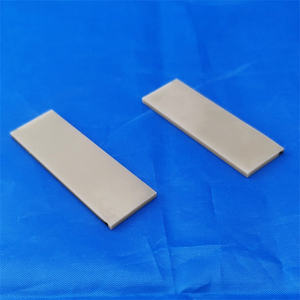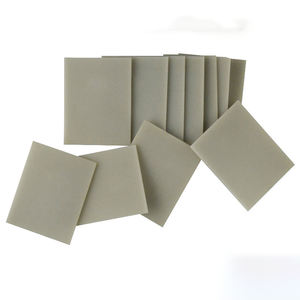Professional industry ceramic supplier, silicon nitride, silicon carbide, aluminum nitride and any other kinds of ceramics.
PRODUCT PARAMETERS
Description
Overview of High Thermal Conductivity Aluminum Nitride Ceramic Substrate Insulated Aln Heat Sink
High Thermal Conductivity Aluminum Nitride Ceramic Substrate Insulated Aln Heat Sink is an advanced technical ceramic renowned for its exceptional thermal conductivity and reliable electrical insulation. It is a key material in high-power electronics, LED lighting, and semiconductor processing, effectively managing heat in demanding applications where performance and reliability are critical.
Features of High Thermal Conductivity Aluminum Nitride Ceramic Substrate Insulated Aln Heat Sink
- High Thermal Conductivity: Offers excellent heat dissipation, comparable to beryllia (BeO).
- Electrical Insulation: Maintains high electrical resistivity even at elevated temperatures.
- Low Thermal Expansion: Matches the coefficient of thermal expansion of silicon, ideal for semiconductor substrates.
- Excellent Mechanical Strength: Possesses good mechanical properties for structural integrity.
- High-Temperature Stability: Performs reliably in harsh environments and at high temperatures.
- Non-Toxic: A safe alternative to beryllium oxide (BeO) ceramics.
Specification of High Thermal Conductivity Aluminum Nitride Ceramic Substrate Insulated Aln Heat Sink
This Aluminum Nitride (AlN) ceramic substrate functions as a high-performance heat sink. It relocates warmth far from warm electronic components extremely properly. Its primary job is maintaining sensitive parts cool. This prevents overheating failings.
AlN ceramic has an essential advantage. Its thermal conductivity is very high. Worths usually range from 170 to 220 W/mK. This approaches the performance of metals like aluminum. Yet AlN is an electrical insulator. This is essential for safety and circuit function. It stops harmful electric shorts.
The product holds up against high temperatures easily. It manages thermal biking well. Parts experience duplicated cooling and heating. AlN stays stable. It resists splitting or warping. This guarantees lasting reliability. Tools last longer.
Its thermal expansion coefficient is reduced. This value is close to silicon. Semiconductor chips are made of silicon. This close match lowers stress and anxiety. Anxiety develops when materials warm up at different rates. Less stress indicates less solder joint failures. Links stay protected.
AlN ceramic is really strong mechanically. It is likewise very hard. This gives great physical security. The surface is extremely smooth. This enables superb bonding. Adhering with thermal user interface materials or direct steel plating is solid. Heat transfers efficiently throughout the joint.
These properties make AlN substratums ideal for requiring applications. They are excellent for high-power LED lights components. They excel in high-density power electronic devices. Consider IGBT components and MOSFETs. They function well in RF/microwave devices. They are suitable for laser diodes. They are utilized in automotive power control devices. They manage the intense warmth in electric vehicle systems.
Using AlN improves device efficiency substantially. It allows higher power thickness. Solutions can be smaller sized. They run cooler. This enhances performance. It expands the running life of the entire assembly. It reduces the danger of thermal closures. Solutions function reliably under tough conditions.
Applications of High Thermal Conductivity Aluminum Nitride Ceramic Substrate Insulated Aln Heat Sink
Light weight aluminum nitride ceramic substratums are special products. They move warmth away quite possibly. This high thermal conductivity is essential. It maintains digital parts cool. Great components last longer. They function much better too. AlN ceramic beats routine alumina ceramic below. AlN moves warmth much quicker. This matters a lot for effective electronics. Warm accumulates fast in these devices.
These substrates are likewise superb electrical insulators. Electrical energy can not go through them easily. This quits shorts and leaks. You get safe, reputable procedure. It protects sensitive circuits. The product is very strong mechanically. It takes care of tough conditions. High temperatures are no problem. It stands up to chemical damage well. It does not break rapidly. This indicates lasting performance.
The main task is spreading warm. AlN substratums act like super warm sinks. They pull warmth right from hot components. Believe power transistors, laser diodes, or LED chips. They relocate that warm successfully. Then it enters into a larger steel heat sink. Or it goes out right into the air. The result is lower operating temperature levels. Tools run cooler and much more steady. Failing prices go down considerably.
You see these AlN substratums anywhere requiring electronic devices exist. Power converters utilize them heavily. High-brightness LED illumination depends on them. Electric vehicle power systems need them. RF and microwave equipment advantages. Advanced computer uses them for cpus. Anywhere warm intimidates performance, AlN helps. It solves the warmth issue properly. It keeps points running efficiently and dependably.
Company Profile
Tanki New Materials Co.Ltd. focus on the research and development, production and sales of ceramic products, serving the electronics, ceramics, chemical and other industries. Since its establishment in 2015, the company has been committed to providing customers with the best products and services, and has become a leader in the industry through continuous technological innovation and strict quality management.
Our products includes but not limited to Aerogel, Aluminum Nitride, Aluminum Oxide, Boron Carbide, Boron Nitride, Ceramic Crucible, Ceramic Fiber, Quartz Product, Refractory Material, Silicon Carbide, Silicon Nitride, ect. please feel free to contact us.

Payment Methods
T/T, Western Union, Paypal, Credit Card etc.
Shipment Methods
By air, by sea, by express, as customers request.
5 FAQs of High Thermal Conductivity Aluminum Nitride Ceramic Substrate Insulated Aln Heat Sink
What makes Aluminum Nitride heat sinks special?
Aluminum Nitride (AlN) ceramic has very high thermal conductivity. It moves heat away from hot electronic parts extremely fast. This prevents overheating better than many other materials. Its thermal performance is much closer to metals like aluminum than regular ceramics.
How well does AlN transfer heat?
AlN ceramic substrates conduct heat exceptionally well. Their thermal conductivity typically ranges from 170 to 220 W/mK. This is significantly higher than alumina ceramic. Alumina usually offers only about 20-30 W/mK. AlN moves heat much more efficiently.
Why is AlN a good electrical insulator?
AlN ceramic is an excellent electrical insulator. It has very high electrical resistivity. This property prevents electrical current from flowing through the heat sink itself. Components stay electrically isolated. This insulation is vital for safety and circuit protection.
Where are AlN heat sinks commonly used?
These heat sinks are ideal for high-power electronics needing superior cooling and electrical isolation. They are found in high-brightness LEDs, power modules, RF/microwave devices, and laser diodes. They are also used in demanding automotive and aerospace applications. Reliability under thermal stress is critical.
How does AlN compare to alumina heat sinks?
AlN offers much better thermal conductivity than alumina. AlN moves heat 5-10 times faster. This allows for better cooling performance in the same space. AlN also has a closer thermal expansion match to silicon chips. This reduces stress at critical joints. AlN costs more but provides superior thermal management for advanced electronics.
REQUEST A QUOTE
RELATED PRODUCTS
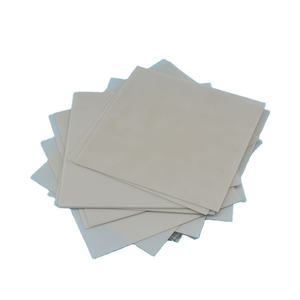
High Purity Aluminum Nitride Ceramic Plate for Industry
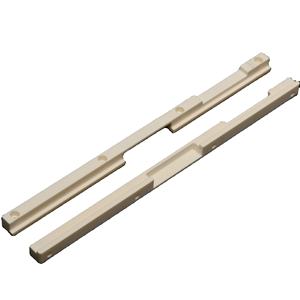
5mm Diameter Conductivity Aluminum Nitride Ceramic Ball
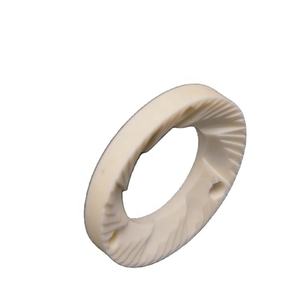
70%Aln+30%Bn Composite Boron Nitride/Aluminum Nitride Ceramics

Heat Sink Aluminum Nitride Ceramic Substrate
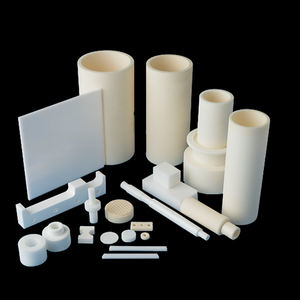
High Polished Aluminum Nitride Aln Powder for Aln Ceramic Substrate for Industry
